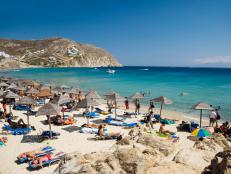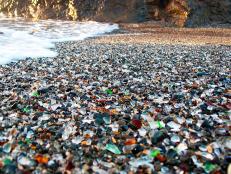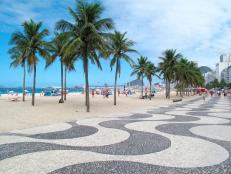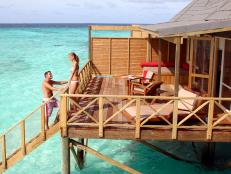10 of the World's Emptiest Beaches
Escape the crowds this summer and relax at one of these secluded destinations around the world.
Honokalani Beach (Maui, Hawaii)
Dueodde Beach (Bornholm, Denmark)
Beaches may not be the first thing that comes to mind when you think of Denmark, but that’s perhaps why the 19-mile stretch of sand that makes up Dueodde Beach lacks the suffocating swarms of sun-worshippers that clog Europe’s more famous beaches. Known for its extraordinarily fine white sand (and occasional nudist guests), on warmer days Dueodde might pass for the tropics if not for the pine trees planted at its edges.
Playa de Rodas (Galicia, Spain)
Abandoned beach spots abound on the Cies Islands, a rocky archipelago off the coast of Pontevedra in Galicia, Spain, but Playa de Rodas might be the best. Set on a quiet, clear-water lagoon, the half-moon beach is packed with soft, pale sand and lined with small dunes. Best of all, the total number of visitors to the entire island is capped at 2,200 people per day, which means never having to protectively stake out your sunbathing spot. The only way in and out is by boat, which sun worshippers can book in advance. Also on offer: Scuba diving, made all the more intoxicating by the resident arroaces — small, native (and endlessly curious) dolphins.
Hatenohama Beach (Kumejima, Japan)
Koh Kradan Beach (Thailand)
Monsul Beach (Cabo de Gata, Andalusia, Spain)
If Monsul Beach looks familiar, perhaps that’s because scenes from Indiana Jones and the Last Crusade were filmed here. Set in the craggy Cabo de Gata-Nijar Natural Park in southeastern Spain — the largest protected coastal area in Andalucia — Monsul boasts crystal-clear water and the region’s famous desert climate. The otherworldly beach is hemmed in by massive, long-hardened volcanic formations, which speak to the area’s fascinating and violent geological history. These days, the scene is far more serene; you might walk along the coast for hours without seeing another person.
Spartines Beach (Alonissos, Greece)
Islamorada (Florida, United States)
Shell Beach (Shark Bay, Western Australia)
Don’t expect to find any sand here. On the banks of the ominously named Shark Bay in Western Australia, Shell Beach is one of the only beaches in the world made up entirely of shells. They’re from the cockle species fragum erugatum, which produce tiny, white and nearly translucent shells. The water has a high salinity inhospitable to most predators, which has allowed the cockles to spawn unchecked, which is why every foot of Shell Beach’s 37 miles is covered in discarded shells. (The beach is a tad uncomfortable to walk on, so bring a sturdy pair of flip flops.) The crowds are few because it’s not a traditional white sand beach, but who needs sandy when you’ve got beachy solitude?





